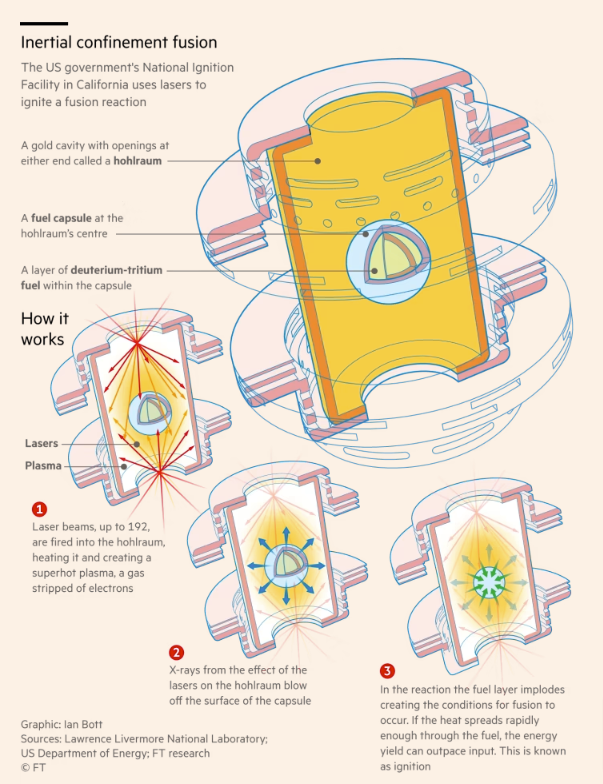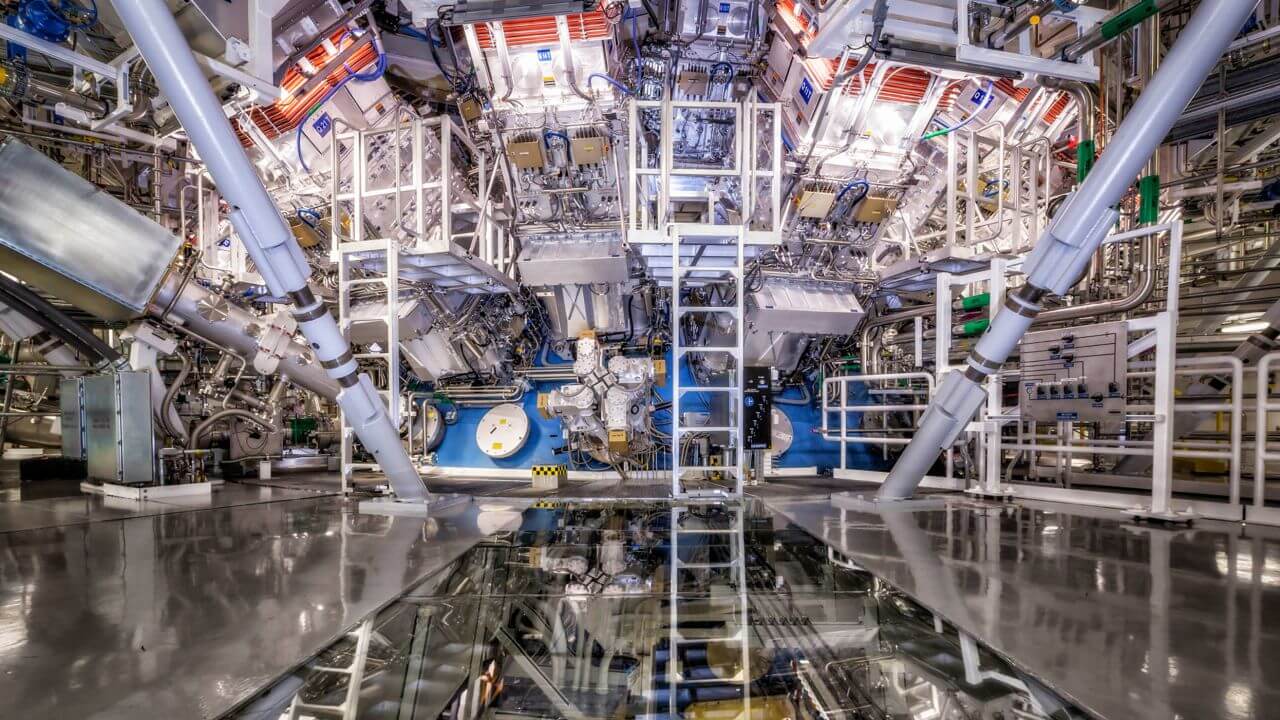The United States (US) Department of Energy (DOE) on Tuesday will announce a “major scientific breakthrough” in the field of nuclear fusion, a potential source of limitless clean energy, by researchers at the DOE’s Lawrence Livermore National Laboratory (LLNL) in California.
While the LLNL and the DOE have given no further details about the breakthrough, reports note that scientists at LLNL successfully produced a nuclear fusion reaction that achieved a net energy gain for the first time. All previous experiments resulted in a net energy loss (i.e. more energy consumed than energy produced).
The breakthrough, which was first reported by the Financial Times, could provide a dependable alternative to fossil fuels with an unlimited supply of clean energy. The fusion reaction at the LLNL produced around 2.5 megajoules of energy, around 120% of the 2.1 megajoules of energy inserted.

According to experts, the energy ratio produced from a nuclear fusion reaction should be at least 100 times higher than the energy input to be commercially viable, a step many believe could take years of research.
In this regard, the latest development could speed up the process of making reliable, clean energy commercially available.
Attempts to recreate nuclear fusion reactions, which power the Sun and other stars, have yet to materialise, with scientists failing to find a sustainable method to produce a net positive energy gain.
The experiment released 2.5 megajoules vs 2.1 MJ of laser energy. But due to inefficiencies, the lasers consume ~330 MJ to charge, with the energy stored in 3,840 high-voltage capacitors for 60 seconds before being released in a 400-microsecond burst https://t.co/jNJsi9rUIM 6/10
— Javier Blas (@JavierBlas) December 12, 2022
A fusion reaction occurs when the nuclei of two lighter atoms fuse under the extreme heat of a 100-million-degree Celcius to form a heavier atom, which produces massive amounts of energy. Hence, successful nuclear fusion reactions have only been observed in stars like the Sun that emit intense heat allowing atoms to fuse.
According to CNN, while scientists normally use a tokamak, a doughnut-shaped vacuum chamber, to produce a fusion reaction, researchers at LLNL used a different technique known as “thermonuclear inertial fusion.” The process involves firing pellets containing hydrogen fuel into an array of at least 200 lasers creating extremely fast explosions at the rate of 50 per second. Heat is then extracted from the explosions and converted to energy.
Experts note that energy derived from nuclear fusion, which has so far remained in the realm of science fiction, could be a “gamechanger” if a sustainable method is found. Nuclear fusion could potentially provide a never-ending source of energy and eliminate the use of fossil fuels. While such an event could take decades, the implications of this development are profound.
SCOOP: Net energy gain in a fusion reaction has been a holy grail in science for decades. Now I’m told US scientists have done it. A massive breakthrough with revolutionary potential for clean power. US Energy Secretary to hold a press conference Tuesday https://t.co/aiyyRU3ehO
— Tom Wilson (@thomas_m_wilson) December 11, 2022
Energy harnessed from sustainable fusion reactions could dramatically reduce energy costs and end price fluctuations, providing greater stability by ensuring an unlimited energy supply. Moreover, it could play a huge role in combating climate change, as the energy produced would be carbon-free. Additionally, nuclear fusion does not produce radioactive waste like nuclear fission, the process used in nuclear power plants.
With lower prices, energy from nuclear fusion would provide a reliable source of power to countries suffering from electricity crises, like Lebanon and Ethiopia, as it could keep electric grids and related systems running. This could also lead to significant progress in global poverty reduction, as poor access to electricity is said to be one of the leading causes of poverty.
The breakthrough follows a rise in global energy prices due to sanctions imposed on Russia’s energy industry following its invasion of Ukraine, leaving Western countries scrambling for more reliable energy sources. Against this backdrop, the development in the field of nuclear fusion could provide a cheap source of reliable energy and reduce countries’ dependence on fossil fuels and fossil fuel exporting countries.

